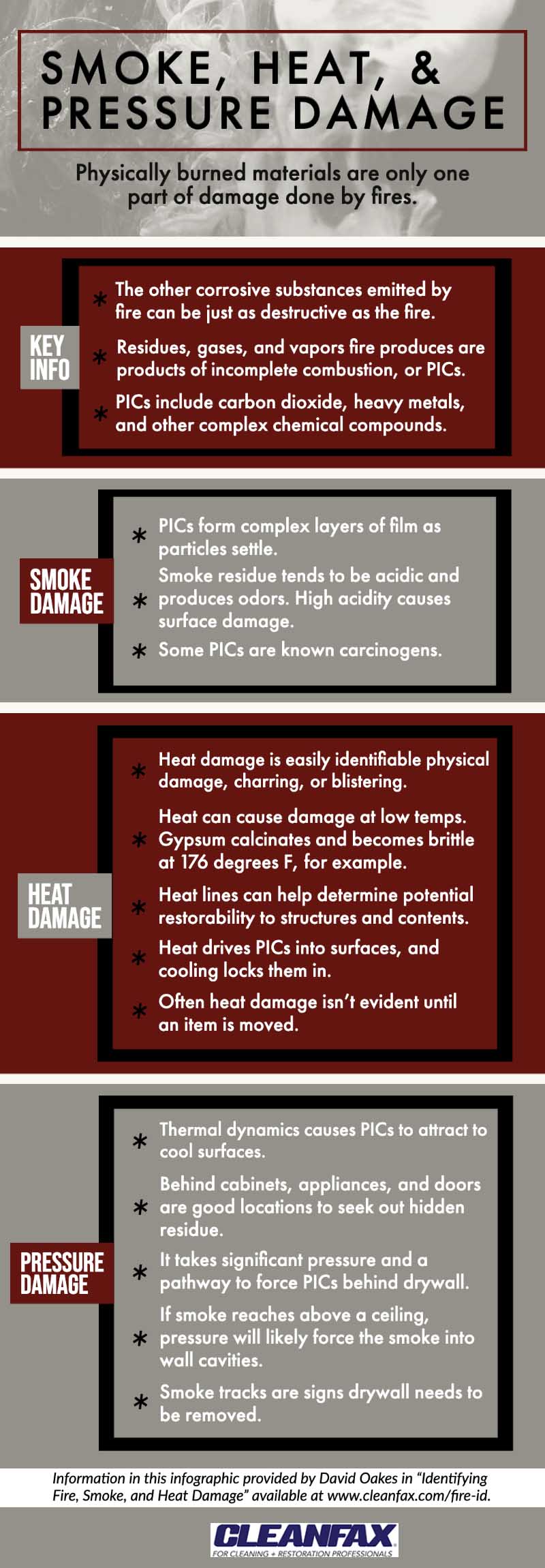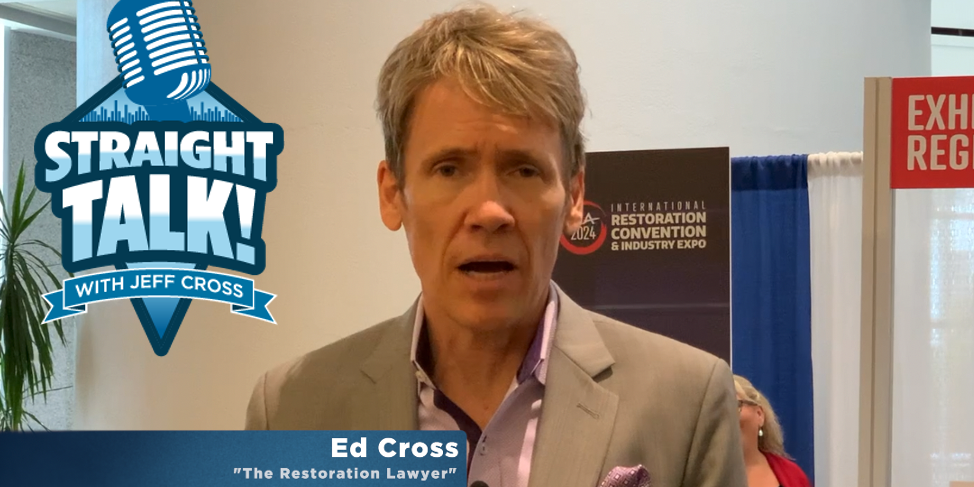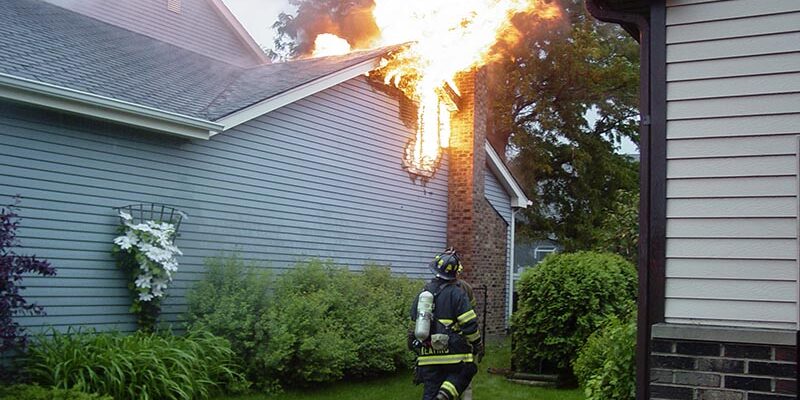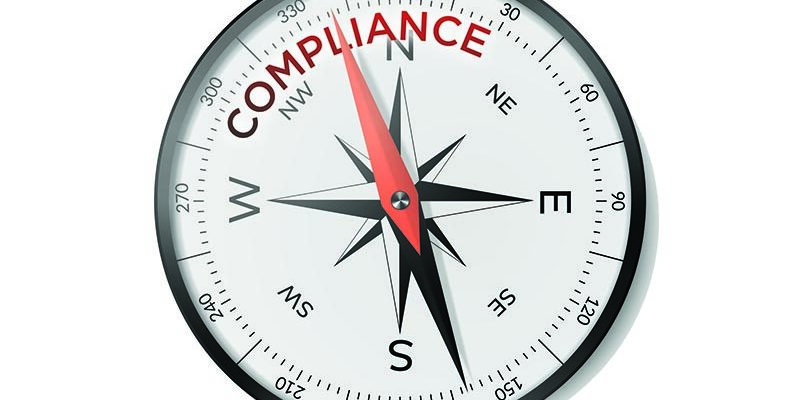Quick Guide to Smoke, Heat, and Pressure Damage

Information in this infographic provided by David Oakes in Identifying Fire, Smoke, and Heat Damage.

Physically burned materials are only one part of damage done by fires. Explore information on smoke damage, heat damage, and pressure damage in the above infographic or in the text below.
Key info
- The other corrosive substances emitted by fire can be just as destructive as the fire.
- Residues, gases, and vapors fire produces are products of incomplete combustion, or PICs.
- PICs include carbon dioxide, heavy metals, and other complex chemical compounds.
Smoke damage
- PICs form complex layers of film as particles settle.
- Smoke residue tends to be acidic and produces odors. High acidity causes surface damage.
- Some PICs are known carcinogens.
Heat damage
- Heat damage is easily identifiable physical damage, charring, or blistering.
- Heat can cause damage at low temps. Gypsum calcinates and becomes brittle at 176 degrees F, for example.
- Heat lines can help determine potential restorability to structures and contents.
- Heat drives PICs into surfaces, and cooling locks them in.
- Often heat damage isn’t evident until an item is moved.
Pressure damage
- Thermal dynamics causes PICs to attract to cool surfaces.
- Behind cabinets, appliances, and doors are good locations to seek out hidden residue.
- It takes significant pressure and a pathway to force PICs behind drywall.
- If smoke reaches above a ceiling, pressure will likely force the smoke into wall cavities.
- Smoke tracks are signs drywall needs to be removed.
Information in this infographic provided by David Oakes in Identifying Fire, Smoke, and Heat Damage.
Information by David Oakes
David Oakes has worked in the cleaning and restoration field since 1973. He consults for both restoration contractors and insurance companies and has served as an expert witness in state and federal court. Oakes is an RIA Certified Restorer, holds multiple IICRC certifications, and is an IICRC approved instructor, teaching restorative drying classes, among others. He is currently chairman of the ANSI/S540 2021 Consensus Body and serves on the IICRC Field Guide for Safety and Health for Disaster Restoration Professionals and the Harmonized Industry Glossary Committee.













